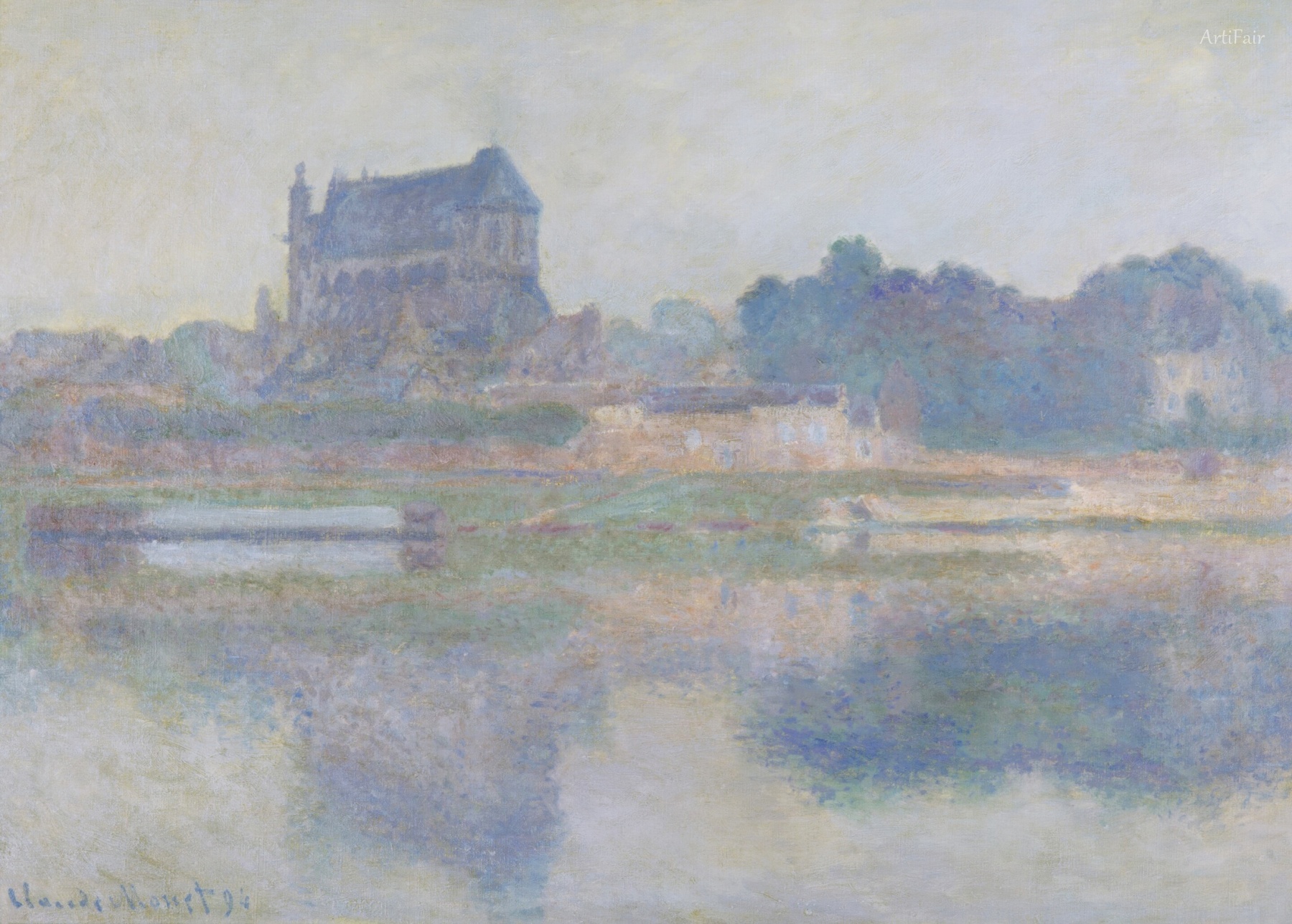
Art Appreciation
In this serene landscape, an ethereal bluish haze envelops the iconic church of Vernon, standing majestically against a softly lit sky—a sanctuary of tranquility amidst the fluid transformations of the natural world. The brushwork is remarkably soft, evoking a dreamlike quality where forms emerge gently from the depths of color, inviting us to imagine the sounds of nature—the subtle ripple of the river and the whisper of the wind brushing through the trees. Monet's unique ability to capture light is superbly evident; the reflections in the water mirror the delicate shades of the sky, creating a harmonious interplay that envelops the viewer.
The composition cleverly balances the architectural elements of the church with the natural landscape, seamlessly integrating human creation with the vastness of nature. There’s an intriguing stillness, a moment frozen in time where the atmosphere feels almost palpable. This painting, created during a period of intense innovation in Impressionism, not only showcases Monet's technical mastery but also serves as a historical snapshot of the changing perceptions of how art can interpret the world around us. It invites us to ponder our relationship with nature and our place within it, resonating with an emotional depth that pulls at the heartstrings, making it more than just a visual experience—it's a journey of introspection and appreciation for the ephemeral beauty of life.